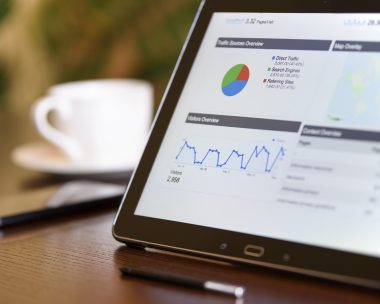Affiliate marketing What is cpa marketing?

CPA (Cost Per Action) is a payment model for advertising on the Internet, where the advertiser bears the costs only for the action performed, such as subscribing to the newsletter, downloading an e-book, supplementing the contact form or registering on the website. What exactly is it? How is it calculated? What are its main advantages?
CPA Marketing — cost per action billing and campaign
In marketing, there are several different methods of accounting for online advertising. Their choice depends on the intended purpose and the type of marketing campaign. Below we present the most important shortcuts determining the costs you can meet here.
One of the most important indicators of the effectiveness of a marketing campaign is CPA, or Cost Per Action. What is hidden under this concept? This is a payment method in which the advertiser is only charged when the user performs a specific action that the advertiser has set, such as filling out a contact form or downloading an e-book from a website. Activities of this type can also be defined as a CPL (Cost Per Lead) model. An action can also be ordering a product, or CPO (Cost Per Order), selling it, or CPS (Cost Per Sale), downloading a file from a website, which is called CPD (Cost Per Download), or making a phone call (CPP – Cost Per Phone).
How to calculate the CPA of an advertising campaign? To do this, the total budgeted expenses should be divided by the number of actions performed by users. For example, when a marketer invested 100 PLN in internet advertising and managed to win 20 new customers, the CPA in this case will be 100/20 = 5. In practice, this means that every new client cost an advertiser 5 PLN.
It is also worth mentioning here other methods of online advertising billing, which are:
- CPC (Cost Per Click) – an efficiency indicator that allows you to calculate the amount to be paid for clicking on an advertisement or a given link, regardless of whether it ended with a given action or sale. Google Ads is based on this billing model. CPC changes over time. This is due to the fact that its calculation takes place on the basis of bidding. The advertiser can determine the maximum amount that he can pay, but he has to reckon with the fact that another user can top his offer.
- CPE (Cost Per Engagement) – a campaign model where the advertiser pays for the costs only if the user interacts with the advertisement in any way. Examples of CPA are advertisements displayed in mobile games. Some are added to the application, while others appear only with the user’s permission. The campaign is only finalized when he clicks on it or when he makes a purchase. What the advertiser will have to pay for is specified in the terms of the contract. CPE is often compared to the title CPA. What makes them different is that Cost Per Engagement is most often applied to applications, and Cost Per Action takes place outside of them.
- CPM (Cost Per Mille) – a model that is used to measure the costs associated with 1000 ad impressions. It is used to monitor its effectiveness. The total cost here is calculated by multiplying the total number of impressions by the CPM rate, and then dividing it by 1000. The Cost Per Mille may vary depending on factors such as your profile information, location, or device that displays your ad.
- CPV (Cost Per View) – a method of calculating advertising fees based on the number of impressions or interactions. It applies to video content and is used, among others, on YouTube. Billing takes place here only after watching a specific time of advertising or after clicking on it.
How exactly does CPA marketing work?
How does CPA marketing look like in practice? Involved in it are:
- An affiliate or publisher – a brand, blogger, or company promoting a product or service in order to attract traffic to a website and make a specific conversion.
- A brand that wants to establish cooperation with an associated entity, whose goal is to increase website traffic, increase sales or number of conversions or generate potential customers.
- CPA platform bringing together partners who want to earn money on promoting products and companies whose goal is to advertise their products.
CPA marketing is very easy to launch. The advertiser must have only a website or target group.
What are the advantages of adopting cost per action model?
Why should I be interested in the CPA model? What is in his favour and makes many marketers choose this strategy? Here are the most important advantages of cost per action.
- Cost savings – in the CPA they are borne exclusively for specific, executed, key actions for the campaigner.
- Measurable effects – the cost-per-action model gives visible results of the promotional activities undertaken. For example, the number of downloaded e-books or completed contact forms.
- Ability to better plan expenses – as mentioned above, the key issue in the CPA model is the cost of acquiring a particular action. Thus, the marketer pays here only for the actions that the user has undertaken. Such a solution significantly facilitates the planning of the campaign budget, while allowing to minimize costs and facilitating billing.
- The versatility of the model, which can be widely used in various types of advertising campaigns.
CPA is a key indicator of advertising performance and an extremely effective tool in internet marketing. It allows you to determine how much exactly the execution of a specific action will cost, such as downloading a file or filling out a contact form. Because Cost Per Action requires a small financial contribution, it works well for small and medium-sized enterprises.



